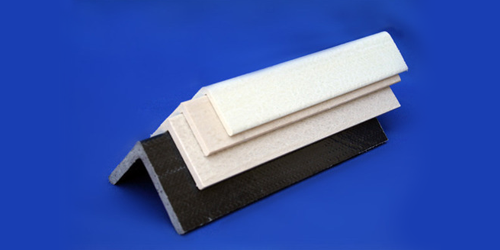In today’s evolving construction landscape, Fiber Reinforced Polymer (FRP) has emerged as a revolutionary material that enhances the durability and efficiency of structural components. Among these components, FRP structural angles stand out for their remarkable properties and wide range of applications. This article delves into what FRP structural angles are, their benefits, applications across industries, and future trends in FRP technology.

frp structural angles
What Are FRP Structural Angles?
FRP structural angles are angular components made from a composite material that consists of a polymer matrix reinforced with fibers, typically glass, carbon, or aramid. These angles are designed to provide structural support while being lightweight and resistant to environmental challenges. The combination of strength and low weight makes them a preferred choice for various construction applications.
Key Benefits of FRP Structural Angles
Lightweight yet Strong
One of the most significant advantages of FRP structural angles is their lightweight nature without compromising strength. Unlike traditional materials such as steel, FRP angles offer high tensile and compressive strength while being significantly lighter. This feature not only reduces transportation costs but also simplifies the installation process, allowing for faster project completion.
Corrosion Resistance
FRP materials are inherently resistant to corrosion, making them ideal for use in harsh environments. They can withstand exposure to moisture, chemicals, and UV radiation, which often lead to deterioration in conventional materials. This corrosion resistance ensures a longer lifespan for structures that incorporate FRP structural angles, resulting in lower maintenance costs over time.
Cost-Effectiveness
While the initial investment in FRP structural angles may be higher than traditional materials, their long-term benefits often outweigh the costs. The durability and low maintenance requirements lead to significant savings over the lifespan of the structure. Additionally, their lightweight nature reduces installation time and associated labor costs.
Applications of FRP Structural Angles
Construction and Infrastructure
FRP structural angles are increasingly used in construction projects, including bridges, buildings, and coastal structures. Their resistance to environmental degradation makes them suitable for applications in marine environments, where exposure to saltwater can quickly corrode traditional materials.
Marine Industry
In the marine industry, FRP structural angles are utilized in boat building and offshore applications. Their lightweight and corrosion-resistant properties are essential for maintaining the integrity of marine structures, ensuring safety and longevity.
Industrial Settings
FRP structural angles find applications in various industrial settings, such as chemical processing and manufacturing. Their ability to withstand harsh chemicals and environmental conditions makes them a reliable choice for supporting equipment and structures in these industries.
Installation and Maintenance Considerations
When installing FRP structural angles, it is crucial to follow best practices to ensure optimal performance. Proper surface preparation, alignment, and secure fastening are essential for achieving structural integrity. Additionally, while FRP requires minimal maintenance, regular inspections can help identify any potential issues before they become significant problems, ensuring the longevity of the materials.
Future Trends in FRP Technology
As technology advances, innovations in FRP materials are on the horizon. Researchers are exploring new fiber reinforcements and polymer matrices to enhance the mechanical properties of FRP structural angles further. These advancements could lead to even broader applications and increased adoption across various industries.
Conclusion
In summary, FRP structural angles represent a significant advancement in construction materials, offering numerous benefits such as lightweight strength, corrosion resistance, and cost-effectiveness. Their versatility makes them suitable for a wide range of applications, from construction to marine and industrial settings. As the industry continues to evolve, considering FRP for your next project could lead to enhanced performance and longevity. For more information on FRP structural angles, reach out to your local suppliers or industry experts.




























